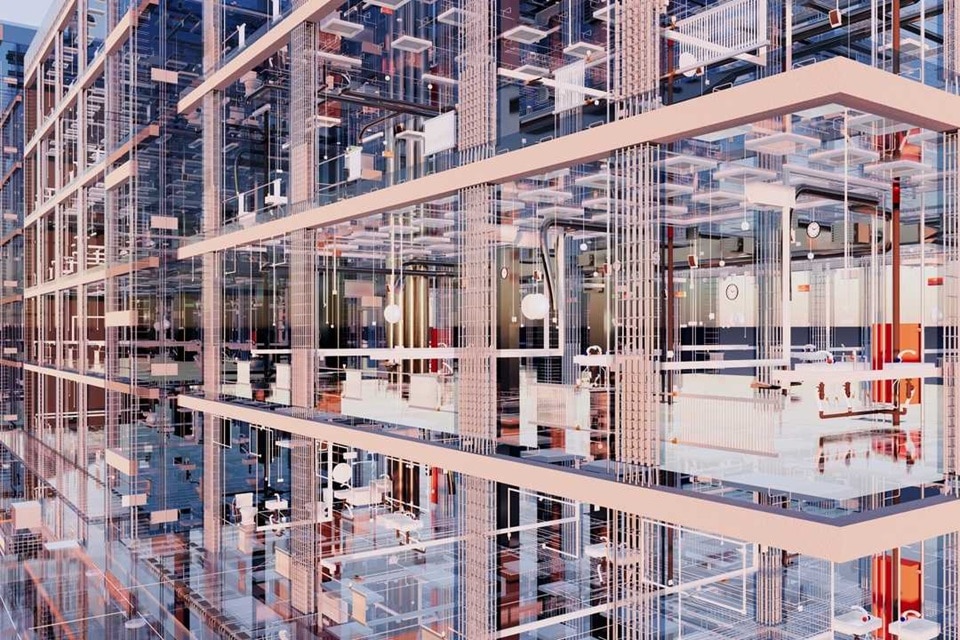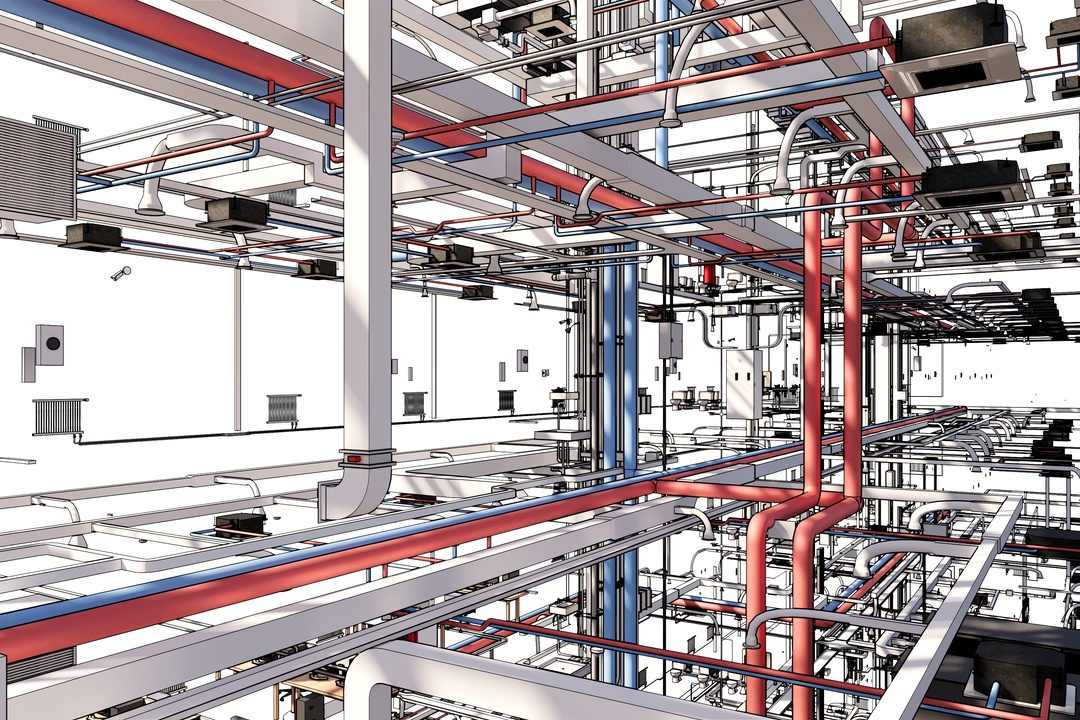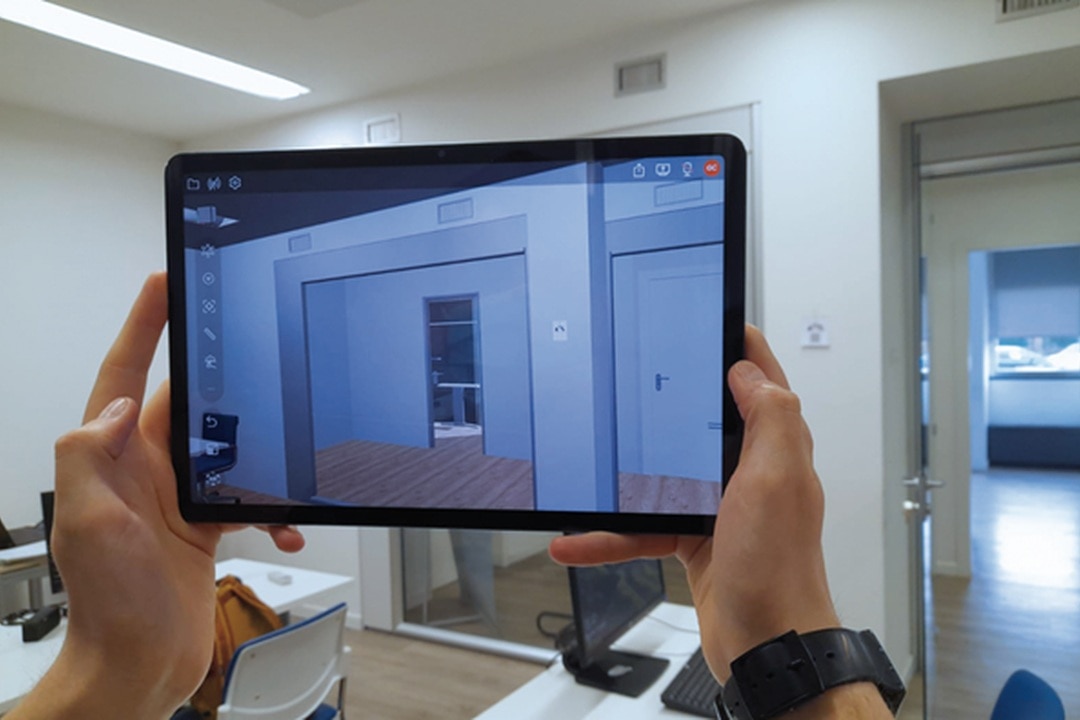Understanding BIM:
A Strategic Tool for Construction Professionals

Since 2016, BIM has been mandatory for public projects in the UK, delivering cost reductions of up to 20%. But its benefits go far beyond financial savings. In an interview, Frédéric Bastin, BIM Consultant at Hager, sheds light on this software tool advancement in the construction industry.
Hello Frédéric, thank you for this interview. Can you explain what BIM is and why it has become so important in construction?
F. - BIM, or Building Information Modeling, is a methodology supported by software that integrates the planning, construction, and management of buildings. It enables smarter data use, facilitating faster and more sustainable construction. BIM collects and manages construction-related data throughout a building's lifecycle, serving as an essential information hub for stakeholders like construction companies, architects, engineers, and manufacturers.
What are the primary goals of BIM?
F. - BIM is central to the digitalization of the construction sector, with key goals including workflow simplification, improved planning, precise design decision-making, building optimization, and environmental impact forecasting, all while ensuring cost efficiency. It benefits all project stakeholders, from project owners and developers to electricians and system integrators, by providing access to essential information for their roles.

BIM modeling using various color codes to indicate project progress.
What are the tangible benefits for projects using BIM?
F. - Integrating time (BIM 4D) and cost (BIM 5D) dimensions have revolutionized project management. These tools allow teams to plan schedules and manage budgets with precision. In 2024, companies using BIM 5D reported a 12% reduction in budget variances and a 95% on-time delivery rate.
For instance, our Dutch colleagues use BIM for electrical equipment installation. With digital tools, technicians update work progress within the digital model and communicate seamlessly with design offices for additional information. This approach ensures smooth communication, precise tracking of installations, and adherence to deadlines.
BIM also plays a critical role in sustainability and energy efficiency. Tools like thermal simulations and lifecycle analyses help evaluate environmental impacts and maximize energy performance. Additionally, BIM optimizes material use, reducing waste and overall environmental impact.
Are there misconceptions about BIM?
F. - Many believe BIM is complex, costly, or only suitable for large projects, but these are misconceptions. While it requires an initial investment in training, the long-term benefits far outweigh the efforts. BIM is scalable, suitable for everything from single buildings to large infrastructures. Reducing BIM to a 3D tool is another common mistake; it is, in fact, a comprehensive database centralizing technical information. Although implementation requires adaptation, tools are increasingly intuitive, and extensive resources support businesses in adopting BIM. While the upfront costs may seem high, the savings from error reduction, cost optimization, and streamlined maintenance make it a worthwhile investment.

3D BIM model of a building's piping systems.
What challenges does BIM implementation face?
F. - BIM implementation still encounters challenges, including initial costs for software, team training, and IT infrastructure. Resistance from professionals accustomed to traditional methods can also slow its adoption. A lack of thorough BIM training in academic curriculum and the rapid evolution of the field create skill gaps. Finally, the absence of clear standards can hinder process efficiency.
How does BIM integrate with other technologies like AI, IoT, or virtual reality?
F. - BIM is continuously integrating with advanced technologies like extended reality (VR/AR), artificial intelligence (AI), the Internet of Things (IoT), and 3D printing to transform construction. Digital models enhance project visualization, modular prefabrication, energy performance, and predictive maintenance. Combining these tools optimizes processes, reduces timelines, boosts sustainability, and improves occupant comfort and client experiences.
 A person uses augmented reality to assess the status of a project through BIM.
A person uses augmented reality to assess the status of a project through BIM.
Thank you very much for your answers! Any final words to conclude this interview?
F. - I would say that BIM has become an essential strategic tool for transforming the construction industry into a more digitalized, collaborative, and sustainable sector. Its efficiency, combined with reduced environmental impact and optimized management, offers significant advantages to the construction field. The rapid evolution of technologies and data management makes it a promising solution for the future of construction.
About Frédéric Bastin:
Since joining Hager Group in 2020, Frédéric has brought valuable expertise in innovation and BIM, particularly in the industrial electrical sector. As an active member of professional organizations like Gimelec, Ignes, and Building Smart, he contributes to the development and advancement of the field.
